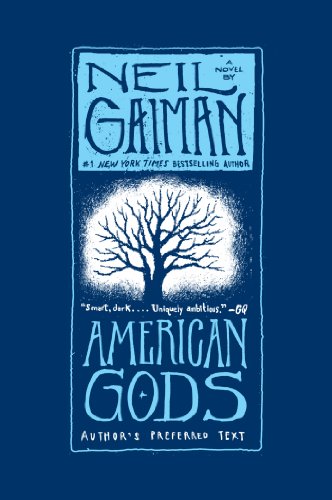3/19/2014
Book Look - American Gods, by Neil Gaiman
It’s possible that I embarked upon this novel with some prejudice aforethought. It’s just that recently Neil Gaiman’s been all over the place – book lists, book groups, even an episode of The Simpsons - and hipster celebrities always make me a little suspicious. By the end of American Gods, however, I was impressed. Perhaps not ready to add Gaiman to the American pantheon of great writers, but definitely impressed.
What Gaiman did was surprise me, and I haven’t been surprised by literary fiction in a while. The premise of the book – that ancient Gods hitchhiked to the U.S. in the hearts and imaginations of the immigrants who came here and continue to live among us today – is winningly imaginative, and while “Name That God!” may not be everyone’s cup of tea, I enjoyed the challenge of trying to identify each modernized deity from Gaiman’s clues (Me: “okay! What deity would be wearing a necklace of skulls? 15pt deduction if I have to look it up on the internet!” I imagine it’s possible to enjoy this book without a thorough grounding in world mythology, but you’ll get a LOT more out of it if you possess some background knowledge, and aren’t too proud to take to the internet when stumped). The protagonist of the story, a mortal everyman by the name of Shadow, is hired as an assistant by Odin, the All-Father, who is crisscrossing the U.S. in an endeavor to recruit gods for his own personal upcoming Ragnorak (the battle that, according to Norse mythology, will signal the end of the world). Anyone who’s read Joseph Campbell on world mythology will recognize the rest of the plot, a basic “hero’s journey” in which Shadow navigates his way through struggle, atonement and transformation. (Hey, it was good enough for Homer, James Joyce, and JRR Tolkien.)
By the time the novel is over Gaiman has introduced us to a host of truly unique characters (some sympathetic, some appalling in the way only ancient religions can be), created some wholly original visuals (a mountain of skulls encircled by screeching thunderbirds beneath roiling red clouds – not a scene you stumble across in fiction every day), teased us with references to a host of world religions/myths/superstitions, established his chops as a wielder of social irony, and left us with several palatable (if not entirely original) insights into what makes America a decent (flawed, but decent) place to live but “a bad place for Gods,” as the old gods repeatedly lament.
Gaiman reminds me a bit of Michael Chabon, another guy who doesn’t mind blurring the line between reality and culture/myth. Both authors know how to establish alternate realities that entertain and illuminate. Between them, they seem to be defining a new genre of magical realism, at once paying homage to literary traditions and yet somehow uniquely American.
Subscribe to:
Posts (Atom)
